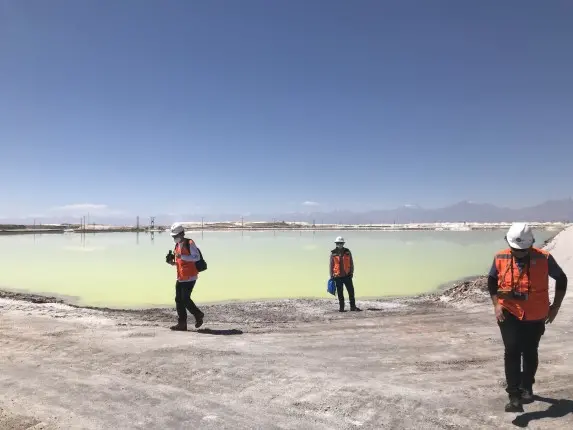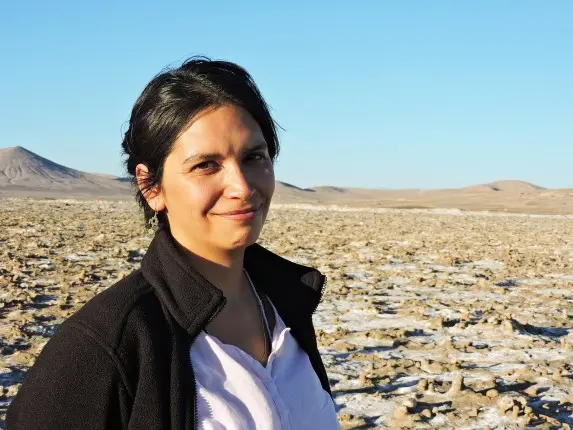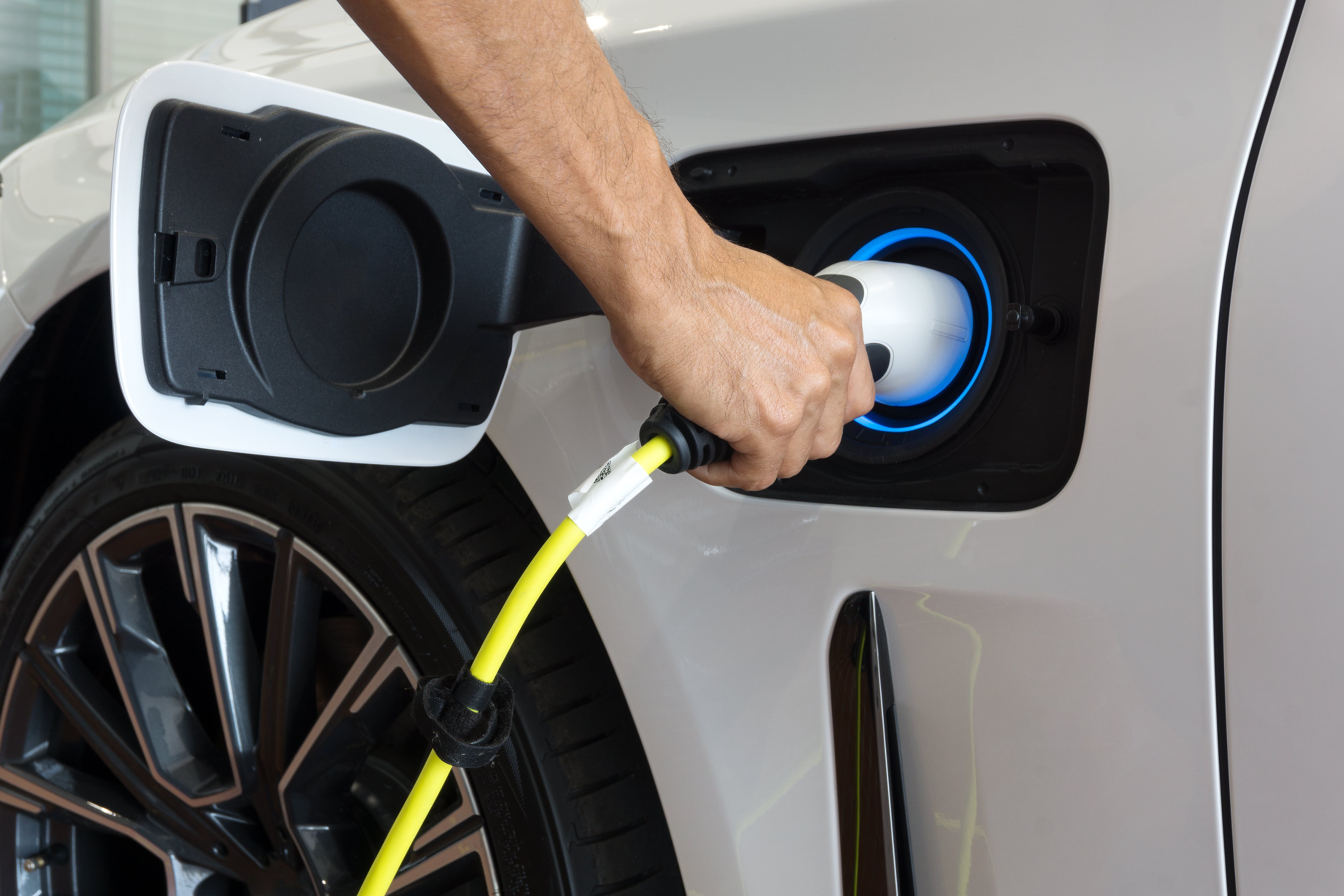
Cristina Dorador has decided that science is not enough. The Chilean microbiologist’s decades of research have convinced her that the unique ecosystem of her country’s Atacama desert is threatened by ever-expanding lithium mines. She has spent years trying to convince the nation’s leaders to protect the place, with little success.
Now, she’s seizing a historic opportunity: Her election to Chile’s constitutional assembly in 2021 has given Dorador a chance to try to change not only Chile’s lithium industry, but the country’s whole approach to natural resources. But will her endeavor have broader implications for the worldwide shift to renewable energy?

As a nonprofit journalism organization, we depend on your support to fund more than 170 reporting projects every year on critical global and local issues. Donate any amount today to become a Pulitzer Center Champion and receive exclusive benefits!
An environmental irony
The Atacama Desert—a vast dryland in northern Chile—is the planet’s second-biggest source of lithium, a light metal that is a key ingredient of the batteries that power virtually all your digital devices, and more importantly, almost all electric vehicles.
Lithium is critical to weaning the planet from the use of fossil fuels. And as the transition from carbon-spewing petroleum-powered cars to electric vehicles accelerates, so does the world’s demand for lithium. The International Energy Agency estimates that lithium production must increase fortyfold by 2040 to bring down carbon emissions enough to stave off the worst impacts of climate change.
So the world needs the Atacama’s lithium mines. But at what price to the health of the desert itself?
The lithium mines, which sit in one of the desert’s salt flats, or salars, suck up huge amounts of mineral-rich brines from underground. This salty water is pumped into shallow ponds and left out under the relentless sun. Over a period of months, most of the water evaporates, leaving behind a sludge rich with lithium. Producing a single ton of lithium in this way uses up hundreds of thousands of liters of brine.
The two companies that operate these mines say none of this activity is harming the Atacama’s ecosystem. SQM, the bigger of the two companies, is 24 percent owned by China-based Tianqi Lithium. Chinese companies own stakes in or control many other lithium mines around the world and dominate production of the processed metal.
Yet independent researchers and many of the Atacama’s indigenous people disagree. They believe that intensive use of underground brine in mining is drying out the water supply for the desert’s plants and animals, including lagoons that are home to several types of rare flamingoes.
Dorador’s research has focused on microbial life forms and related issues in the Atacama’s salt flats for the past two decades. “The salars are complex, fragile ecosystems,” she told me recently. “Every little change can produce big damage.”
Earlier this year, Dorador co-authored a study that found the number of flamingoes in the Salar de Atacama has declined over the last three decades, in part because of mining. While these birds have moved to other lagoons in neighboring Argentina and Bolivia thus far, their ability to do so may shrink as climate change makes the region hotter and lithium extraction expands in those countries, too. The paper warns that “lithium mining could soon have strong negative impacts on flamingo abundance across the region.”
The problem, however, goes way past one species. “Lithium mining is not sustainable,” Dorador states flatly. “It’s a myth.”
Protection through politics?
It took a long time for Dorador to decide that something more than research was necessary to safeguard the Atacama.
“I thought if we could show how fantastic these places are, they would be protected,” she says. “But I’ve realized science alone is not enough. Not at all.”

Three years ago, when massive street protests forced the Chilean government to agree to create a new constitution, an opportunity to do more beckoned. Dorador successfully ran for election to the national assembly that is currently haggling over the nation’s new governing document. She and others now are working to enshrine protections for the environment, animals, and people directly in the constitution.
“The salars have always been seen as mines, not as ecosystems,” observes Dorador. “That’s one of the main things we want to change with the new constitution.”.
Earlier this spring, I visited the grandly colonnaded building in Santiago (formerly the seat of Chile’s Congress) where 155 delegates are negotiating the contents of the new document. Dozens of delegates were seated at vintage wooden desks in concentric semi-circles in the building’s main chamber, under a magnificent stained-glass dome.
As each speaker took their turn—some via video—their faces appeared on two colossal monitors attached high on the chamber’s walls. Most of the delegates were dressed casually—more for a day at the mall than a date with history. Untucked polos and T-shirts outnumbered suits and ties by an order of magnitude. Hand-lettered signs were taped to many of the lecterns. Dorador, in a brown blouse and striped slacks, sat in front of one lectern with a sign that read: “Nature has rights!”
While creating a new constitution is exciting in principle, it can be tedious in practice. On the day I visited, delegates spent hours debating the wording of no fewer than 25 articles addressing the right to information. They’ve been working in this way since last July and will spend many more weeks haggling over sentences and clauses and concepts before the finished document is presented to the Chilean public to accept or reject in a referendum later this year.
The lithium conundrum
Amidst the grinding of these political gears, Dorador and other delegates have had some success. The draft constitution already includes language that grants legal rights to ecosystems and animals. The document also emphasizes the public’s right to participate in environmental decision-making and mandates the protection of biodiversity.
The adoption of this constitution by Chilean voters could seriously restrict environmentally dubious industries such as mining. Yet this victory in protecting Chiles environment might have major implications for the whole world’s shift to renewable energy. Chile is not only a major lithium producer, but also the world’s top supplier of copper, another metal crucial to clean energy technologies. Slowing the supply of those metals into the global market means slowing the pace of the energy transition.
Dorador and her fellow delegates face a potent conundrum as they work: Is there a way to help provide the world with the lithium it needs, without sacrificing the Atacama?
It is a question being asked in a growing number of places where there are conflicts between environmental damage now and the need to transition to cleaner energy in the future. The mining of metals necessary to make car batteries, wind turbines and other green energy hardware already damages ecosystems from Indonesia to the Democratic Republic of Congo.
In the coming years, as battles over how to balance local and global environmental needs multiply, Chile’s struggles over the Atacama will be an important bellwether.








